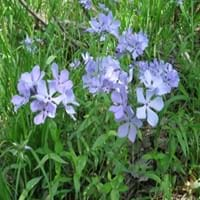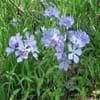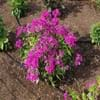Life Span
Perennial
Perennial
Type
Flowering Plants
Perennial
Origin
Northeastern United States, Mid-Atlantic United States, Southeastern United States, Central United States, Texas, Canada
California
Types
Blue Moon, Clouds of Perfume
Not Available
Number of Varieties
Not Available
Habitat
Rich Woods
Chaparral, River side
USDA Hardiness Zone
4-8
7-10
Sunset Zone
1a, 1b, 2a, 2b, 3a, 3b, 4, 5, 6, 7, 8, 9, 10, 11, 12, 13, 14, 15, 16, 17
H1, 4, 5, 6, 7, 8, 9, 10, 11, 12, 14, 15, 16, 17, 18, 19, 20, 21, 22, 23, 24
Habit
Mat-forming
Upright/Erect
Minimum Width
Not Available
Flower Color
Blue Violet
White, Yellow
Flower Color Modifier
Bicolor
Bicolor
Fruit Color
Not Available
Green, Tan
Leaf Color in Spring
Green
Gray Green
Leaf Color in Summer
Green
Gray Green
Leaf Color in Fall
Green
Gray Green
Leaf Color in Winter
Not Available
Light Green
Leaf Shape
Ovate-lanceolate
Lance shaped
Plant Season
Spring
Spring, Summer
Sunlight
Partial Sun, Partial shade
Full Sun
Type of Soil
Loam
Loam, Sand
The pH of Soil
Neutral
Neutral, Alkaline
Soil Drainage
Well drained
Well drained
Bloom Time
Spring
Early Spring, Spring, Late Spring, Early Summer, Summer
Tolerances
Not Available
Drought
Where to Plant?
Container
Ground
How to Plant?
Cuttings, Seedlings
Cuttings, Seedlings
Plant Maintenance
Medium
Medium
Watering Requirements
Requires regular watering
Needs watering once a week, Water well when planted
In Summer
Lots of watering
Lots of watering
In Spring
Moderate
Moderate
In Winter
Average Water
Average Water
Soil pH
Neutral
Neutral, Alkaline
Soil Type
Loam
Loam, Sand
Soil Drainage Capacity
Well drained
Well drained
Sun Exposure
Partial Sun, Partial shade
Full Sun
Pruning
Remove dead flowers
prune nearly to the ground in late fall
Fertilizers
Apply 10-10-10 amount
organic fertlizers
Pests and Diseases
Leaf spot, Powdery mildew, Rust
Verticillium Wilt
Plant Tolerance
Drought
Drought
Flower Petal Number
Single
Single
Showy Foliage
No
Not Available
Foliage Texture
Medium
Not Available
Foliage Sheen
Matte
Not Available
Attracts
Hummingbirds, Butterflies
Bees, Birds, Butterflies
Allergy
Mild Allergen
no allergic reactions
Aesthetic Uses
Ground Cover
Showy Purposes
Beauty Benefits
Not Available
Not Available
Environmental Uses
Air purification
Air purification
Medicinal Uses
Boils, Eczema, Intestinal disorders
antimicrobial, Astringent, Gum Problems, Stomach pain
Part of Plant Used
Flowers, Leaves, Root
Flower Stalk
Other Uses
As a tea substitute, Used as eyewash
Used as Ornamental plant
Used As Indoor Plant
No
No
Used As Outdoor Plant
Yes
Yes
Garden Design
Mixed Border, Rock Garden / Wall, Wildflower
Feature Plant, Groundcover, Mixed Border, Wildflower
Botanical Name
PHLOX divaricata 'Blue Moon'
ROMNEYA coulteri
Common Name
Wild Blue Phlox, Woodland Phlox
Matilija Poppy
In Hindi
Wild Blue Phlox
Matilija Poppy
In German
Wild Blue Phlox
Matilija Poppy
In French
Wild Blue Phlox
Matilija Poppy
In Spanish
Wild Blue Phlox
Matilija amapola
In Greek
Άγρια μπλε Phlox
Matilija παπαρούνας
In Portuguese
Wild Blue Phlox
Matilija Poppy
In Polish
Dziki Niebieski Phlox
Matilija Poppy
In Latin
Phlox ferae blue
Matilija Poppy
Phylum
Magnoliophyta
Magnoliophyta
Class
Magnoliopsida
Magnoliopsida
Order
Solanales
Papaverales
Family
Polemoniaceae
Papaveraceae
Clade
Angiosperms, Asterids, Eudicots
Angiosperms, Eudicots
Tribe
Phlocideae
Not Available
Subfamily
Polemonioideae
Papaveroideae
Importance of Wild Blue Phlox and Matilija Poppy
Want to have the most appropriate plant for your garden? You might want to know the importance of Wild Blue Phlox and Matilija Poppy. Basically, these two plants vary in many aspects. Compare Wild Blue Phlox and Matilija Poppy as they differ in many characteristics such as their life, care, benefits, facts, etc. Every gardener must at least have the slightest clue about the plants he wants to plant in his garden. Compare their benefits, which differ in many ways like facts and uses. The medicinal use of Wild Blue Phlox is Boils, Eczema and Intestinal disorders whereas of Matilija Poppy is antimicrobial, Astringent, Gum Problems and Stomach pain. Wild Blue Phlox has beauty benefits as follows: Not Available while Matilija Poppy has beauty benefits as follows: Not Available.
Compare Facts of Wild Blue Phlox vs Matilija Poppy
How to choose the best garden plant for your garden depending upon its facts? Here garden plant comparison will help you to solve this query. Compare the facts of Wild Blue Phlox vs Matilija Poppy and know which one to choose. As garden plants have benefits and other uses, allergy is also a major drawback of plants for some people. Allergic reactions of Wild Blue Phlox are Mild Allergen whereas of Matilija Poppy have no allergic reactions respectively. Having a fruit bearing plant in your garden can be a plus point of your garden. Wild Blue Phlox has no showy fruits and Matilija Poppy has no showy fruits. Also Wild Blue Phlox is not flowering and Matilija Poppy is not flowering . You can compare Wild Blue Phlox and Matilija Poppy facts and facts of other plants too.





